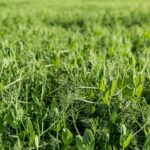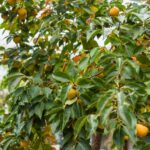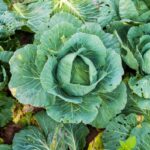Late blight, caused by the fungus Phytophthora infestans, is a devastating disease that can quickly destroy potato crops if left unchecked. Identifying the early signs of late blight is crucial for farmers and gardeners to take preventive measures and minimize crop losses. Here are ten early indicators that your potatoes may be affected by late blight:
1. Leaf Lesions
Water-Soaked Spots
Early signs of late blight often appear as water-soaked lesions on the leaves. These spots may initially be small and dark green but quickly enlarge and turn brown or black as the disease progresses.
Irregular Borders
Lesions caused by late blight typically have irregular, undefined borders, unlike the circular lesions associated with other potato diseases. This distinctive characteristic can help differentiate late blight from other common leaf diseases.
2. White Mold Growth
Fuzzy Growth on Undersides
As late blight lesions mature, they may develop a fuzzy or moldy growth on the undersides of the leaves. This white mold is a sign of sporulation, where the fungus produces spores that can spread rapidly to neighboring plants.
Musty Odor
Late blight-infected plants may emit a musty or earthy odor, particularly when the foliage is wet or during periods of high humidity. This odor is caused by the release of volatile compounds by the fungus.
3. Dark Lesions on Stems
Stem Darkening
Late blight can also affect the stems of potato plants, causing them to develop dark lesions or discoloration. These lesions may appear water-soaked initially but can quickly progress to become dark and sunken as the disease advances.
Collapsed Stems
Infected stems may become weak and collapse under the weight of the foliage, leading to a characteristic wilted appearance in affected plants.
4. Foliage Yellowing
Yellowing Leaves
Late blight-infected leaves may exhibit yellowing or chlorosis, particularly around the edges of lesions. This yellowing is a result of the disruption of chlorophyll production caused by the fungal infection.
Premature Defoliation
As late blight progresses, infected leaves may undergo premature defoliation, where they dry up, wither, and fall off the plant. This can accelerate the spread of the disease and further compromise the health of the crop.
5. Tuber Rot
Brown Spots on Potatoes
Late blight can also affect potato tubers, causing them to develop brown or dark-colored lesions. These lesions may initially be superficial but can quickly progress to rot the entire tuber if left unchecked.
Soft, Soggy Texture
Infected tubers may develop a soft, watery, or mushy texture due to tissue breakdown caused by the fungal infection. This makes the potatoes unpalatable and unsuitable for consumption or storage.
6. Rapid Disease Progression
Fast Spreading
Late blight is known for its rapid spread, particularly under favorable environmental conditions such as cool temperatures and high humidity. Infected plants can quickly serve as sources of inoculum, leading to widespread disease outbreaks in a short period.
Visible Spore Production
In advanced stages of late blight infection, you may observe the production of visible spores on the surfaces of infected plant tissues. These spores are easily dispersed by wind, rain, or human activity, facilitating the further spread of the disease.
Early detection of late blight is essential for implementing effective management strategies and minimizing crop losses. By recognizing the early signs of late blight, such as leaf lesions, white mold growth, dark lesions on stems, foliage yellowing, tuber rot, rapid disease progression, and visible spore production, farmers and gardeners can take proactive measures to mitigate the impact of the disease on their potato crops. Prompt action, including the use of fungicides, cultural practices, and resistant varieties, can help control late blight and protect potato yields. Additionally, proper sanitation and crop rotation are crucial for preventing the recurrence of late blight in subsequent growing seasons. By staying vigilant and monitoring potato crops closely, growers can safeguard their livelihoods and ensure a healthy potato harvest.







